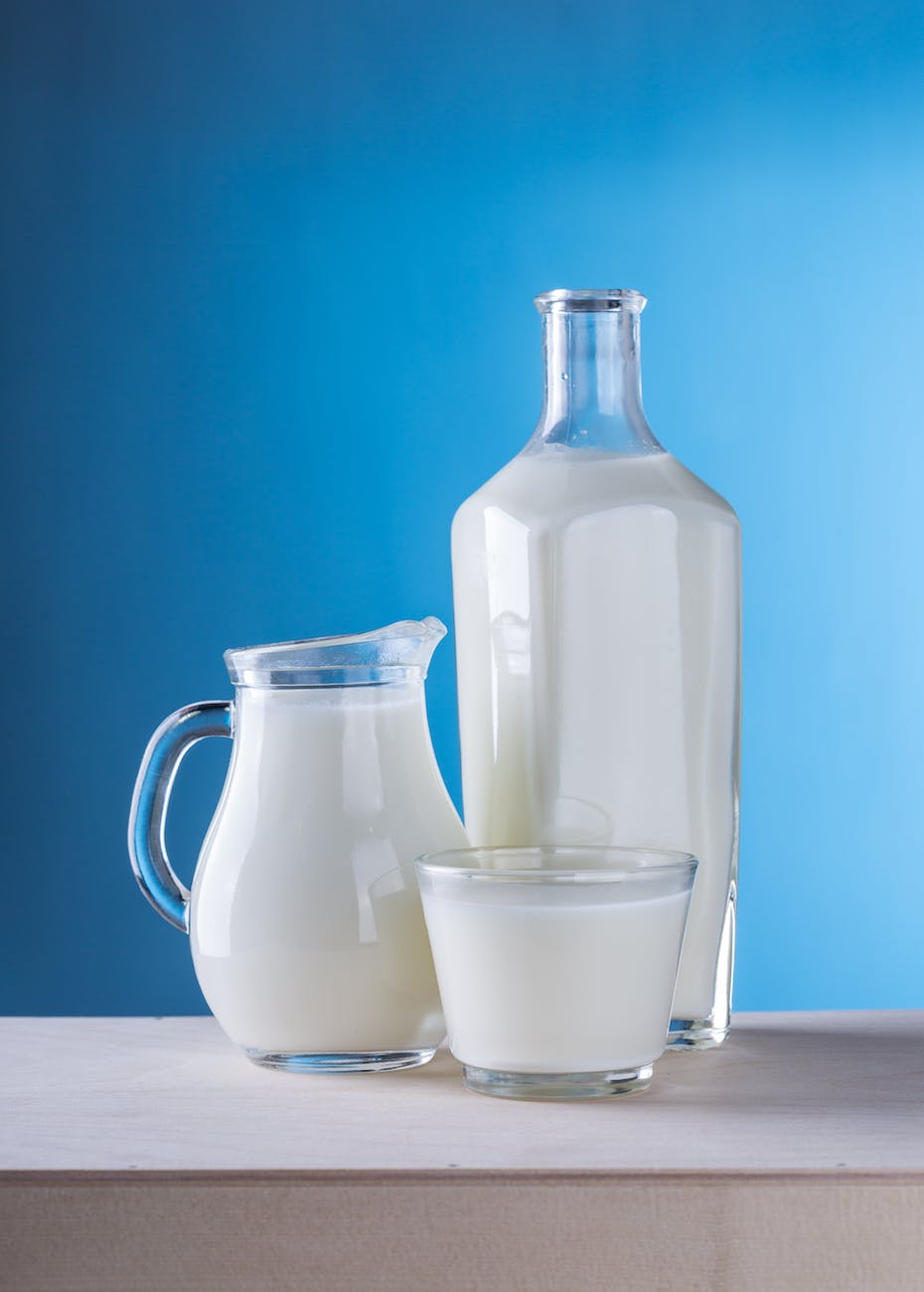
Navigating the journey of pregnancy brings a myriad of questions, especially regarding nutrition. What you eat and drink plays a crucial role not just in your health, but also in the healthy development of your baby. Among the plethora of dietary choices, one beverage stands out for its unique benefits and versatility – almond milk.
Almond milk, a plant-based alternative to traditional dairy milk, has garnered significant attention in recent years, especially among expecting mothers. Its rising popularity isn’t just a trend; it’s a reflection of its nutritional value and the growing need for inclusive dietary options that cater to diverse needs, including lactose intolerance, vegan diets, and specific health considerations during pregnancy.
But why almond milk? This delightful, nutty-flavored beverage is not just a dairy substitute; it’s a nutrient powerhouse. Packed with essential vitamins and minerals, it offers a host of benefits that are particularly valuable during pregnancy. From supporting bone development to managing blood pressure and aiding in the control of gestational diabetes, almond milk stands as a beacon of health and wellness for pregnant women.
Yet, amid its benefits, questions and concerns naturally arise. How does it compare to cow’s milk and other non-dairy alternatives? What about homemade vs. store-bought varieties? And importantly, are there any risks or considerations to be aware of, especially for women with specific health conditions or dietary restrictions?
In this comprehensive guide, we’ll dive deep into the world of almond milk during pregnancy. We’ll explore its nutritional profile, trimester-specific benefits, its role in managing pregnancy-related conditions, and how it can contribute to recovery and lactation post-birth. We’ll also provide practical tips on incorporating almond milk into your diet, ensuring you make the best choices for you and your baby.
Join us on this journey to uncover the myriad benefits of almond milk during one of the most beautiful and challenging times of your life – pregnancy. Whether you’re a soon-to-be mom, a lactation consultant, or just curious about this nutritious beverage, this guide promises to enlighten, inform, and perhaps even surprise you with what almond milk has to offer.
What is Almond Milk?
In the quest for a nutritious and adaptable alternative to dairy milk during pregnancy, almond milk emerges as a standout choice. But what exactly is this increasingly popular beverage?
Almond milk is a plant-based milk made from almonds, a nut renowned for its health benefits. The process of making almond milk is surprisingly simple yet ingenious. It involves blending almonds with water and then straining the mixture to remove solid particles. The result is a smooth, creamy liquid that bears the subtle flavor and nutritional essence of almonds.
The beauty of almond milk lies in its versatility. It can be homemade or store-bought, with each type having its unique characteristics. Homemade almond milk typically has a more natural and distinct almond flavor and allows for complete control over ingredients, ensuring the absence of additives and preservatives. On the other hand, commercial almond milk, widely available in grocery stores, is often fortified with additional vitamins and minerals, making it an even more nutritious option for expecting mothers.
But why has almond milk gained such traction among pregnant women? The answer lies in its nutritional profile. Almond milk is naturally rich in several key nutrients essential for pregnancy, including vitamin E, known for its antioxidant properties, and healthy fats. Though naturally low in protein, many commercial brands fortify their almond milk with additional nutrients such as calcium, vitamin D, and protein, making it comparable to dairy milk in nutritional value.
Moreover, almond milk is lactose-free, making it a great alternative for those with lactose intolerance – a common concern among pregnant women. It’s also suitable for vegans and those who prefer plant-based diets, offering a cruelty-free and environmentally friendly option.
Despite these benefits, not all almond milk is created equal. The nutritional content can vary significantly between brands and types, especially concerning added sugars, preservatives, and levels of fortification. For instance, some brands may add sugar to enhance taste, which might not be desirable for those managing gestational diabetes or watching their calorie intake.
As we delve deeper into the world of almond milk, it’s clear that this beverage offers more than just a dairy alternative. Its nutritional benefits, coupled with its adaptability to dietary preferences and needs, make it a valuable addition to the pregnancy diet. In the following sections, we’ll explore these benefits in more detail, providing expecting mothers with the knowledge they need to make informed dietary choices during this crucial phase of life.
Nutritional Profile of Almond Milk
Understanding the nutritional profile of almond milk is crucial for expecting mothers who are considering incorporating it into their pregnancy diet. Almond milk’s composition makes it not just a mere substitute for dairy milk but a distinct nutritional choice with its own set of benefits.
Essential Nutrients in Almond Milk
- Vitamins:
- Vitamin E: Almond milk is a natural source of Vitamin E, an antioxidant that protects cells from damage and boosts the immune system.
- Vitamin D: Often fortified in commercial almond milk, Vitamin D is vital for bone health and immune function.
- Vitamin A: Important for fetal development, some brands of almond milk are fortified with Vitamin A.
- Vitamin B12: Crucial for vegetarians and vegans, fortified almond milk can be a good source of Vitamin B12, essential for neurological health and DNA synthesis.
- Minerals:
- Calcium: Critical for the development of the baby’s bones and teeth, and for maintaining maternal bone health. Many almond milk brands fortify their product with calcium.
- Potassium: Helps regulate blood pressure, which is important in preventing pregnancy complications like preeclampsia.
- Healthy Fats:
- Almond milk contains unsaturated fats, which are beneficial for heart health and play a role in fetal development.
Comparing Almond Milk to Cow’s Milk and Other Non-Dairy Alternatives
Almond milk differs from cow’s milk in several ways. It’s naturally lower in protein and carbohydrates, making it a suitable option for those managing blood sugar levels, such as women with gestational diabetes. Additionally, almond milk is lower in calories and fat compared to cow’s milk, which can be advantageous for those watching their weight.
However, it’s important to note that almond milk naturally lacks some of the key nutrients found in cow’s milk, such as protein and iodine. This gap is often bridged by fortification, a process where nutrients are added to almond milk during production. It’s essential for pregnant women to check the labels of almond milk to understand the nutritional content and ensure they choose a brand that supplements these vital nutrients.
Fortification of Almond Milk
Fortification plays a key role in enhancing the nutritional value of almond milk. While homemade almond milk offers the benefit of naturalness and absence of additives, it lacks the fortification that commercial brands provide. These fortified nutrients are particularly important during pregnancy when nutritional needs are heightened. Essential nutrients like calcium, vitamin D, and sometimes protein and other vitamins are added to make almond milk more comparable to cow’s milk in its nutritional offering.
Nutritional Needs During Pregnancy
Pregnancy is a time of increased nutritional demands to support fetal growth and maternal health. While almond milk can contribute significantly to meeting these needs, it should be part of a varied and balanced diet. Given its low protein content, it’s important for pregnant women consuming almond milk to obtain adequate protein from other dietary sources.
In summary, almond milk presents a unique nutritional profile, rich in certain vitamins and minerals, especially when fortified, and lower in calories and fat. Its role in a pregnancy diet can be quite beneficial, especially when complemented with other nutrient-dense foods to ensure a comprehensive intake of all necessary nutrients for both mother and baby. In the next section, we’ll delve into the specific benefits of almond milk during the different stages of pregnancy and how it can support the health and wellbeing of both the mother and the developing fetus.
Benefits of Almond Milk During Pregnancy
The consumption of almond milk during pregnancy can offer a range of benefits, catering to the unique nutritional needs of expecting mothers. Its composition not only supports general health but also addresses specific pregnancy-related concerns.
Key Benefits of Almond Milk
- Bone Health:
- Calcium and Vitamin D: Fortified almond milk is an excellent source of calcium and often vitamin D, essential for the development of the baby’s bones and teeth. These nutrients also play a critical role in maintaining the mother’s bone density, crucial during and after pregnancy.
- Heart Health and Blood Pressure Management:
- Low in Saturated Fat: Almond milk is naturally low in saturated fat, contributing to better heart health.
- Potassium: Its potassium content helps regulate blood pressure, a vital aspect of preventing conditions like hypertension and preeclampsia during pregnancy.
- Gestational Diabetes Management:
- Low Glycemic Index: Almond milk has a low glycemic index, meaning it doesn’t cause a rapid spike in blood sugar levels, making it a suitable choice for women managing gestational diabetes.
- Nutrient Intake for Dietary Restrictions:
- For vegans, vegetarians, or those with lactose intolerance, almond milk provides essential nutrients without compromising dietary restrictions.
- Weight Management:
- Being lower in calories compared to traditional dairy milk, almond milk can help in managing weight gain during pregnancy, provided the rest of the diet is balanced and nutritious.
Addressing Nutritional Gaps
While almond milk offers numerous benefits, it is naturally low in certain nutrients crucial during pregnancy, such as protein and iodine. Expecting mothers should therefore ensure these nutrients are incorporated into their diets through other food sources or supplements as advised by a healthcare provider.
Almond Milk in a Balanced Pregnancy Diet
Incorporating almond milk into a pregnancy diet offers an opportunity to enhance nutrient intake while enjoying a delicious and versatile beverage. It can be used in smoothies, cereals, or as a standalone drink. However, it’s important to view almond milk as part of a broader, diverse diet that includes a variety of nutrient-rich foods.
Customizing Almond Milk Consumption
Pregnant women should opt for unsweetened and fortified almond milk varieties to maximize its benefits. Reading nutrition labels is crucial to avoid added sugars and to ensure that the almond milk is fortified with essential nutrients.
In conclusion, almond milk can be a valuable addition to the dietary regimen of pregnant women. Its array of benefits aligns well with the nutritional needs during pregnancy, making it a favorable choice for those looking for a nutritious, plant-based milk alternative. As we move forward, we will explore how the consumption of almond milk can be tailored to the specific needs of each trimester, ensuring that expecting mothers and their babies receive the right nutrients at the right time.
Trimester-wise Almond Milk Consumption
Navigating through the trimesters of pregnancy requires a nuanced approach to nutrition, as the needs of both the mother and the developing fetus evolve. Almond milk, with its unique nutritional profile, can be tailored to suit these changing needs throughout each stage of pregnancy.
First Trimester: Laying the Foundations
In the first trimester, the foundations of fetal development are laid, making it crucial to consume nutrient-rich foods.
- Folate: While almond milk is not a natural source of folate, some brands fortify their milk with this essential nutrient, crucial for preventing neural tube defects.
- Vitamin E: Almond milk’s vitamin E content supports cell development and can help combat oxidative stress during these early stages.
- Gentle on the Stomach: For many women, the first trimester brings nausea and morning sickness. Almond milk can be a soothing, easy-to-digest option during this time.
Second Trimester: Supporting Growth and Development
The second trimester marks a period of rapid growth and development of the fetus, where the nutritional needs of the mother also increase.
- Calcium and Vitamin D: This is a critical period for the development of the baby’s skeletal structure. Almond milk fortified with calcium and vitamin D supports this aspect of fetal growth.
- Energy Boost: Increased calorie needs in the second trimester can be supported by incorporating almond milk into smoothies or oatmeal, providing a nutritious, energy-boosting meal.
Third Trimester: Preparing for Birth and Lactation
The third trimester focuses on preparing the body for birth and lactation.
- Bone Health Maintenance: The continued intake of almond milk helps maintain maternal bone health as the baby’s demand for calcium peaks.
- Hydration: Staying hydrated is crucial in the third trimester. Almond milk can be a nutritious alternative to water, providing hydration along with essential nutrients.
- Low Glycemic Index: Maintaining balanced blood sugar levels is important as the risk of gestational diabetes is higher. Almond milk’s low glycemic index makes it a good choice during this time.
Additional Considerations
- Protein Needs: Throughout pregnancy, protein needs are elevated. Almond milk is lower in protein compared to cow’s milk, so it’s important to ensure adequate protein intake from other sources.
- Iron Absorption: Almond milk doesn’t contain iron, and its calcium content can interfere with iron absorption. Pairing it with iron-rich foods or consuming it at different times can help optimize iron uptake.
Tailoring Almond Milk Consumption
Each trimester presents unique challenges and nutritional demands. While almond milk can be a valuable dietary addition throughout pregnancy, it should be complemented with other nutritious foods to ensure a balanced diet. Women should always consult with healthcare providers to tailor their diet according to individual health needs and pregnancy progression.
In the following section, we will explore how almond milk can play a role in managing specific pregnancy-related conditions, enhancing the overall health and well-being of the mother and the baby.
Almond Milk and Pregnancy-Related Conditions
Almond milk’s nutritional properties not only support general health during pregnancy but also offer benefits in managing specific pregnancy-related conditions. Understanding how to leverage this nutritious beverage can be pivotal for expecting mothers facing these challenges.
Gestational Diabetes
Gestational diabetes, a common condition in pregnancy, requires careful management of blood sugar levels. Almond milk can be particularly beneficial here:
- Low Glycemic Index: With its low glycemic index, almond milk does not cause significant spikes in blood sugar levels, making it an ideal choice for women with gestational diabetes.
- Balancing Carbohydrates: When paired with a balanced diet, almond milk can help manage overall carbohydrate intake, crucial for controlling blood sugar levels.
Hypertension and Preeclampsia
Hypertension and preeclampsia are serious conditions that can arise during pregnancy, requiring diligent monitoring and dietary management.
- Potassium: The potassium in almond milk helps regulate blood pressure, which is essential for preventing and managing hypertension.
- Calcium and Magnesium: These minerals, often fortified in almond milk, play a role in blood pressure regulation and may reduce the risk of developing preeclampsia.
Bone Health
Pregnancy increases the demand for calcium, both for fetal development and to maintain the mother’s bone density.
- Calcium Fortification: Many brands of almond milk are fortified with calcium, providing a significant portion of the daily requirement to support the development of the baby’s bones and teeth, as well as maternal bone health.
Allergies and Intolerances
Food allergies and intolerances can complicate pregnancy nutrition. Almond milk offers a safe alternative for certain conditions:
- Lactose Intolerance: For those who are lactose intolerant, almond milk is a lactose-free alternative to dairy milk, preventing the discomfort and digestive issues associated with lactose intolerance.
- Nut Allergies: However, it’s important to note that almond milk is not suitable for those with nut allergies, and alternative non-dairy milks should be considered in such cases.
Nutritional Considerations
While almond milk aids in managing these conditions, it’s essential to consider its nutritional limitations:
- Protein: Almond milk is lower in protein compared to cow’s milk, so additional protein sources should be included in the diet.
- Iodine and Iron: Almond milk does not naturally contain iodine and iron, important nutrients during pregnancy. Expecting mothers should ensure these are obtained from other dietary sources.
Integrating Almond Milk into the Pregnancy Diet
To maximize the benefits of almond milk in managing these pregnancy-related conditions, it should be integrated thoughtfully into the diet:
- Moderation and Balance: Almond milk should be consumed as part of a balanced diet, complemented by a variety of other nutrient-dense foods.
- Consultation with Healthcare Providers: Always consult healthcare providers for personalized advice, especially when managing health conditions during pregnancy.
In the next section, we will explore how almond milk can contribute to recovery and lactation post-birth, highlighting its role in the postpartum period.
Recovery and Lactation: The Role of Almond Milk Post-Birth
Postpartum recovery and lactation are critical periods where nutrition plays a key role. Almond milk, with its unique composition, can be a valuable dietary component during this phase, supporting new mothers in their journey of recovery and breastfeeding.
Nutritional Support for Postpartum Recovery
After childbirth, a mother’s body requires adequate nutrition to heal and regain strength. Almond milk can contribute beneficially to this recovery process:
- Rich in Vitamins: The vitamins present in almond milk, especially if it’s fortified, can aid in tissue repair and boost the immune system, which is crucial after delivery.
- Bone Health: The high calcium content, particularly in fortified almond milk, is vital for restoring maternal bone density post-pregnancy, especially for breastfeeding mothers who need extra calcium.
Lactation and Breastfeeding
Breastfeeding mothers have increased nutritional needs to ensure a healthy milk supply and to replenish their own nutrient stores.
- Hydration: Almond milk can be a hydrating beverage choice for nursing mothers, which is essential as adequate hydration is crucial for milk production.
- Caloric Intake: While almond milk is lower in calories, it can be part of a balanced diet that ensures the mother gets enough calories to support lactation.
Weight Management
For mothers looking to manage their weight post-pregnancy, almond milk can be a beneficial component of their diet.
- Low-Calorie Option: Almond milk is lower in calories and fat compared to cow’s milk, making it a good option for mothers working on post-pregnancy weight management.
- Satiety: The nutrients in almond milk can contribute to a feeling of fullness, helping to control appetite and facilitate healthy weight loss.
Considerations for Nursing Mothers
While almond milk offers several benefits, nursing mothers should keep in mind the following:
- Allergen Transmission: Mothers should be aware that the consumption of almond milk (or any nut product) could potentially transmit allergens to the baby through breast milk. Monitoring the baby for any allergic reactions is important.
- Dietary Diversity: Almond milk should be part of a diverse diet that provides all the necessary nutrients for breastfeeding mothers. This includes adequate protein, iron, and other vitamins and minerals that almond milk might lack.
Integrating Almond Milk into a Postpartum Diet
To effectively incorporate almond milk into a postpartum and lactation diet:
- Balanced Meals: Combine almond milk with other nutritious foods to create balanced meals that support recovery and lactation.
- Consult Healthcare Providers: Discuss dietary choices with healthcare providers, especially when breastfeeding, to ensure all nutritional needs are met.
In the final analysis, almond milk can play a supportive role in the postpartum recovery and lactation period. Its nutrient profile, along with its versatility, makes it a practical and beneficial choice for new mothers. In the concluding section, we will wrap up the discussion, emphasizing the overall significance of almond milk during and after pregnancy.
Concluding Thoughts: Embracing Almond Milk in Maternal Nutrition
As we conclude our exploration of almond milk’s role in pregnancy, postpartum recovery, and lactation, it’s clear that this versatile and nutritious beverage can play a significant part in maternal nutrition. Its unique properties offer various health benefits, making it an appealing choice for expecting and new mothers.
Recap of Almond Milk Benefits
- During Pregnancy: Almond milk provides essential nutrients like calcium, vitamins, and healthy fats, aiding in fetal development and maternal health. It’s especially beneficial for managing conditions like gestational diabetes and hypertension.
- Postpartum and Lactation: Post-birth, almond milk supports recovery by contributing to hydration, nutrient replenishment, and potentially aiding in weight management, while also being a viable option for lactating mothers.
Making Informed Choices
When incorporating almond milk into the maternal diet, it’s crucial to make informed choices:
- Reading Labels: Opt for unsweetened, fortified almond milk to maximize nutritional benefits while avoiding added sugars.
- Dietary Balance: Remember that almond milk should be part of a well-rounded diet. It’s not a standalone solution but rather a complement to a variety of nutrient-rich foods.
- Professional Guidance: Consulting with healthcare providers or nutritionists is essential to tailor dietary choices to individual health needs, especially when managing specific health conditions.
Addressing Dietary Restrictions and Preferences
Almond milk’s rise in popularity is partly due to its appeal to a wide range of dietary preferences and restrictions:
- Vegan and Vegetarian Diets: As a plant-based milk, almond milk is ideal for those following vegan and vegetarian diets, providing an alternative source of certain nutrients typically found in animal products.
- Lactose Intolerance and Allergies: For those who cannot consume dairy due to lactose intolerance or allergies, almond milk offers a nutritious and palatable alternative.
The Bigger Picture in Maternal Health
The journey through pregnancy, birth, and postpartum is a complex and nutrient-demanding period. Almond milk, with its myriad of health benefits, is more than just a trendy beverage; it’s a practical and healthful addition to the maternal diet. However, it’s important to view it as part of a larger mosaic of nutritional care – one that involves a variety of foods and nutrients to support the health and well-being of both mother and child.
Final Thoughts
In embracing almond milk, we embrace a choice that supports health, caters to diverse dietary needs, and offers versatility in the culinary world. Whether used in smoothies, cereal, or as a comforting beverage, almond milk can be a delightful and nutritious part of the maternal diet. As with any dietary choice during these critical phases of life, the key lies in balance, variety, and mindfulness to ensure that the nutritional needs of both mother and baby are met with care and wisdom.
FAQs on Almond Milk During Pregnancy
- Is almond milk safe to drink during pregnancy?
- Yes, almond milk is safe during pregnancy if consumed in moderation. It’s a good source of vitamins and minerals, but make sure to choose fortified, unsweetened varieties.
- Can almond milk help with morning sickness?
- Almond milk can be gentle on the stomach and may help some women with morning sickness. However, its effectiveness varies from person to person.
- Does almond milk provide enough calcium for pregnant women?
- Fortified almond milk can contribute significantly to calcium intake, but it should be complemented with other calcium-rich foods or supplements as recommended by your healthcare provider.
- Is almond milk a good option for lactose-intolerant pregnant women?
- Absolutely. Almond milk is lactose-free and a great alternative for those who are lactose intolerant or allergic to cow’s milk.
- Can drinking almond milk increase the risk of gestational diabetes?
- No, almond milk has a low glycemic index and is typically low in sugar, especially the unsweetened varieties, making it a safe choice for women with or at risk of gestational diabetes.
- How does almond milk compare to cow’s milk in terms of nutritional value?
- Almond milk is lower in calories and protein but can be fortified with nutrients like calcium and vitamins D and E. It’s a good alternative for those who cannot or choose not to consume dairy.
- Can consuming almond milk help manage pregnancy-related hypertension?
- Almond milk can be beneficial due to its potassium content, which helps regulate blood pressure. However, it should be part of an overall healthy diet.
- Is homemade almond milk nutritionally better than store-bought?
- Homemade almond milk is free from additives and preservatives but lacks the fortification of vitamins and minerals that store-bought versions offer. It’s a trade-off between naturalness and enhanced nutrition.
- Can almond milk aid in postpartum weight loss?
- Almond milk can be a part of a weight loss diet postpartum as it’s lower in calories and fat compared to cow’s milk. However, it should be balanced with a nutrient-rich diet.
- Should I be concerned about allergens in almond milk while breastfeeding?
- If your family has a history of nut allergies, it’s wise to consult with a pediatrician or allergist. While almond milk is generally safe, allergens can sometimes be transmitted through breast milk.
Blog Tags
pregnancy nutrition, almond milk benefits, lactose intolerance, gestational diabetes, bone health, vegan pregnancy, dairy alternatives, maternal health, postpartum recovery, breastfeeding nutrition














